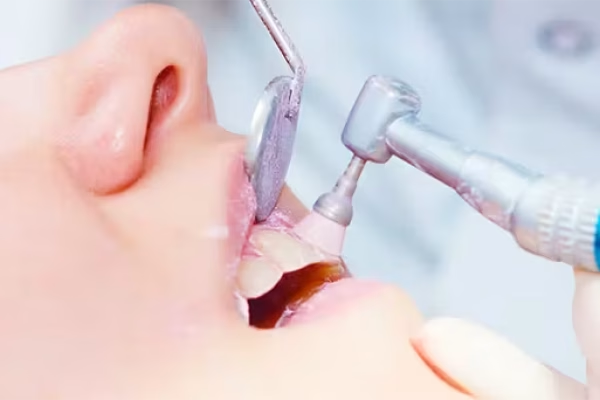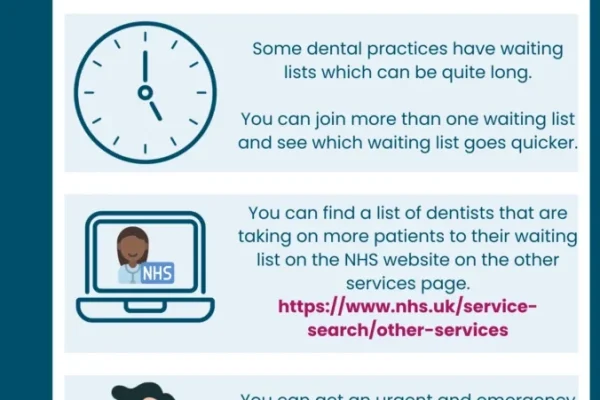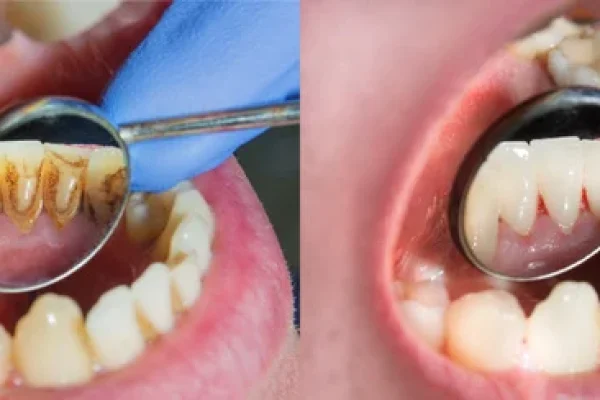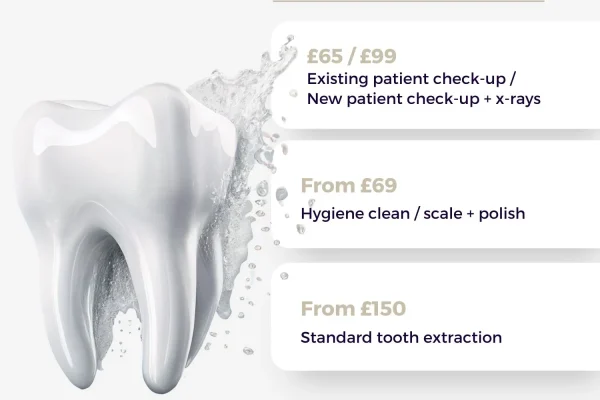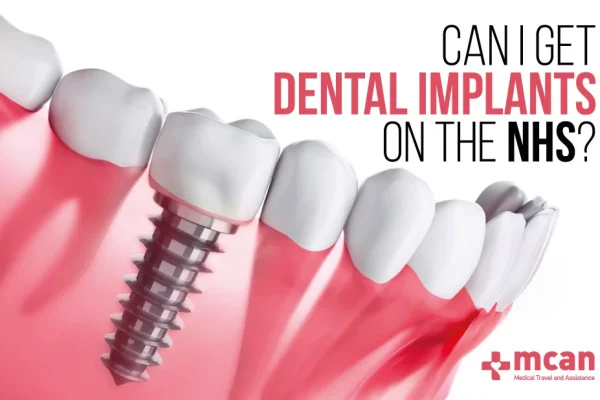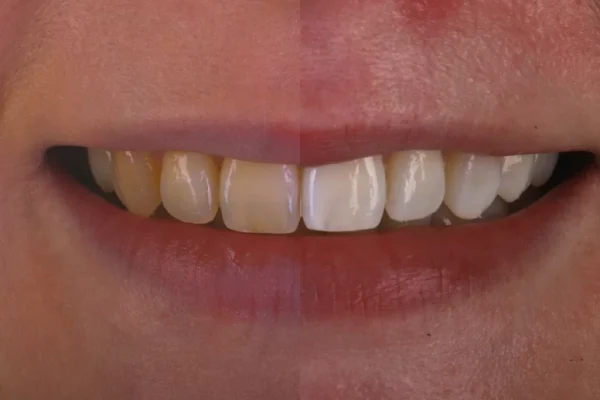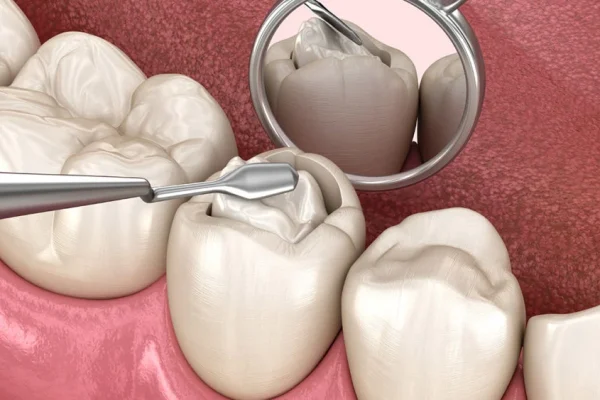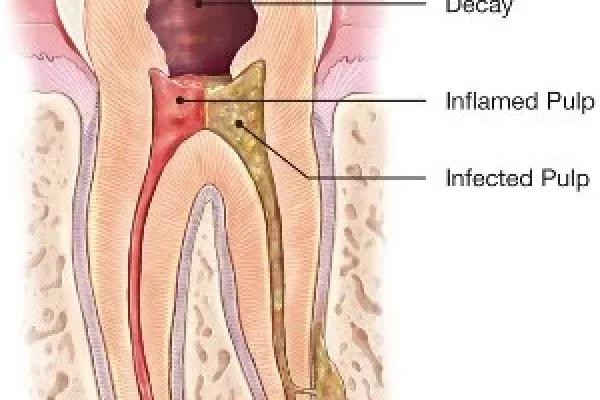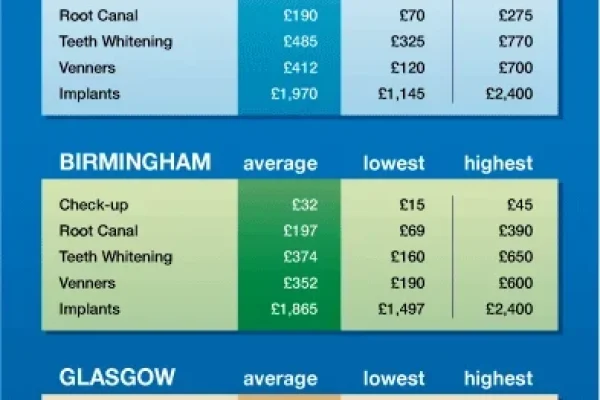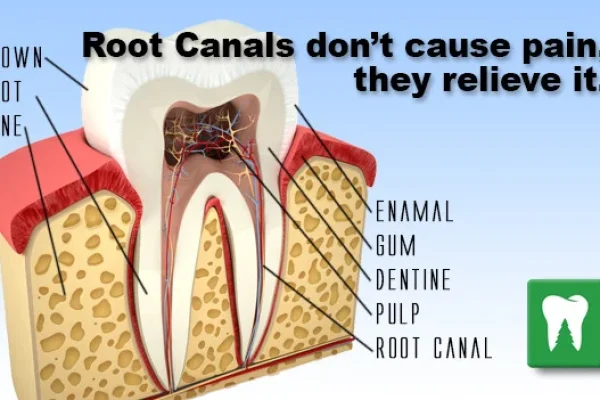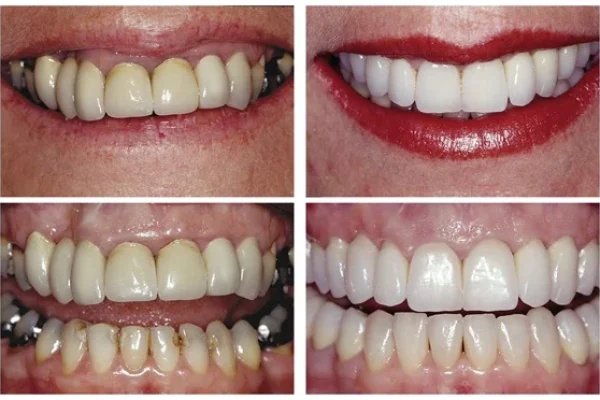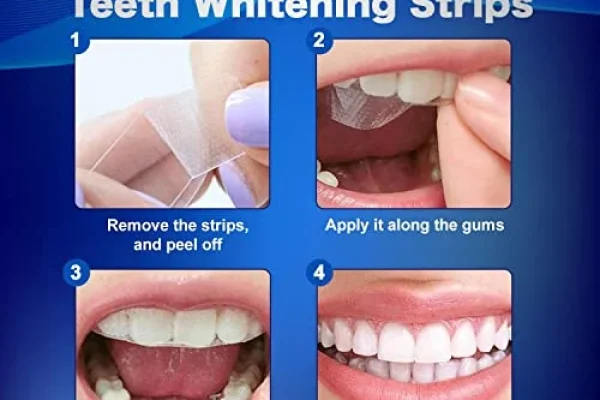
Table of Contents
ToggleKey Takeaways
- Dental bridge cost varies widely, typically from \$3,500 to \$10,000 or more for multi-unit bridges.
- Factors influencing cost include the *type* of bridge, number of units, materials, location, and complexity.
- Traditional and Maryland bridges are generally less expensive upfront than *implant-supported bridges*.
- Insurance can significantly reduce out-of-pocket expenses, often covering 50% after the deductible, up to an annual maximum.
- Alternatives like removable partial dentures are cheaper initially but have different functional and long-term considerations.
- Long-term value includes restoring function, preventing tooth shifting, and improving aesthetics.
Understanding the bridge work dental cost: A Comprehensive Guide
Missing teeth. They happen. Whether through accident, decay, or the simple, unforgiving march of time, a gap in your smile isn’t just an aesthetic concern. It’s a functional challenge, potentially leading to shifting teeth, bite issues, and even bone loss over time. Enter the dental bridge – a time-tested solution designed to quite literally *bridge* the void, anchored by adjacent teeth or even implants. But, and it’s a *significant* “but,” the conversation invariably pivots, often with a sharp intake of breath, to the ‘bridge work dental cost’. This isn’t a one-size-fits-all scenario. The price tag for restoring your smile with a bridge, a type of dental prosthetic, can swing wildly, influenced by a constellation of factors, from the materials used to the complexity of the case and, crucially, your geographic location. Think of it less as a fixed price on a shelf and more as a bespoke creation, priced accordingly. We’re about to peel back the layers on this financial enigma, exploring what influences the final figure, what you can expect to pay, and how to navigate the costs, ensuring you’re armed with the knowledge to make the best decision for your oral health and your wallet.
What is the Average bridge work dental cost and How is it Determined?
So, you’re considering bridging the gap, literally and figuratively, in your smile. A dental bridge stands as a robust, reliable answer to missing teeth, restoring both the functionality of your bite and the visual harmony of your grin. Yet, as anyone who’s ever contemplated significant dental work knows, the question looms large: “What is the average bridge work dental cost?” It’s the query that launches a thousand search engine results, often leaving you more perplexed than when you started, thanks to the sheer variability of the estimates. Let’s tackle this head-on. While providing a single, definitive number is nigh impossible without a dentist peering into your mouth, we can certainly establish a realistic range. Generally speaking, the cost of dental bridge work in the United States might fall somewhere between \$1,500 and \$6,000 per pontic (the replacement tooth) and crown (the anchor tooth) unit. This means a common three-unit bridge (replacing one missing tooth, anchored by crowns on the two adjacent teeth) could range from \$3,500 to \$10,000 or even more. Yes, that’s a substantial spectrum. This variability isn’t arbitrary; it’s meticulously determined by several interconnected factors, each playing a crucial role in the final tally. These include the number of teeth being replaced, the type of bridge chosen, the materials used in its construction, the complexity of the dental work required (including preparatory procedures), the location of the dental practice, and the experience of the dental professional performing the work. Understanding these foundational elements is key to demystifying the ‘cost of bridge teeth’ and preparing yourself for the financial commitment involved. It’s about appreciating that this isn’t just an appliance; it’s a detailed, skilled procedure tailored specifically to your oral architecture.
What is the cost of dental bridge?
Alright, let’s drill down into the most fundamental question: what’s the typical range for the cost of a dental bridge? As we’ve established, it’s fluid, but a commonly cited range for a standard, traditional three-unit bridge often sits between \$3,500 and \$6,000. Keep in mind, this is a broad sweep, and depending on the factors we’re about to discuss, it can easily dip lower or skyrocket higher. This cost generally encompasses the entire process, from the initial diagnostic appointments and tooth preparation to the laboratory fabrication of the custom bridge appliance and the final fitting appointments. It’s not merely the price of the physical bridge itself but the holistic dental service required to design, create, and securely place it. For most patients stepping into a dental office contemplating this procedure, “What is the cost of dental bridge?” is understandably the very first question out of their mouth, quickly followed by a hopeful glance towards their insurance card.
What will a bridge cost?
Asking “What will a bridge cost?” is essentially asking for a crystal ball prediction without providing the date, time, or location. Because the price is so highly variable, contingent on all those individual factors, the most accurate (though perhaps unsatisfying) answer is: it depends. It depends on whether you need one missing tooth replaced or several. It depends on whether the supporting teeth are healthy or require significant preparatory work. It depends on the materials your dentist recommends – porcelain fused to metal, all-porcelain, or zirconia, each with different costs associated with their strength, aesthetics, and manufacturing process. Therefore, suggesting that getting an exact, binding quote necessitates a thorough in-person consultation with a qualified dentist is not a deflection; it’s simply reality. They need to assess your specific oral health situation, discuss your treatment goals, and formulate a personalized treatment plan. The final ‘cost of a bridge’ is ultimately the summation of all these individual components, carefully calculated based on the dentist’s expertise and the specifics of your case.
How much does it cost to buy a bridge?
The phrasing “How much does it cost to buy a bridge?” reveals a common misconception. You aren’t simply ‘buying’ a dental bridge off the shelf like a piece of jewellery or a household appliance. It’s not a commodity you pick up and install yourself. What you’re paying for is a comprehensive dental procedure, a complex service that involves significant expertise, custom fabrication, and multiple clinical appointments. The ‘cost for a bridge’ covers far more than just the materials used to create the prosthetic. It includes the dentist’s diagnostic skill in determining if a bridge is the right solution, their clinical expertise in preparing the supporting teeth (often requiring precise shaping and perhaps root canal treatment), the sophisticated work of the dental laboratory that custom-builds the bridge to fit your unique mouth shape and bite, and the meticulous process of bonding it securely into place. It’s an investment in restoring function and appearance, incorporating professional fees, lab costs, and material expenses. Framing it as simply ‘buying’ the bridge misses the intricate craftsmanship and medical procedure involved in its placement.
How Much Do Dental Bridges Cost?
Stepping back slightly for a broader perspective, let’s re-examine the general question: “How much do dental bridges cost?”. While we’ve touched on averages, it’s worth reinforcing the vast range. You might see figures anywhere from a few thousand dollars to well over ten thousand for more complex cases or those involving multiple units or specific materials like zirconia or full-cast gold (though less common aesthetically). This range reflects not only the number of units involved but also the inherent complexities we’ve begun to touch upon. A simple three-unit bridge replacing a single tooth in a straightforward case will naturally sit at the lower end compared to a bridge replacing several teeth, requiring extensive preparation on the abutment teeth, or utilising premium materials. It’s crucial to approach the “dental bridges cost” not as a fixed menu price but as an estimate derived from a detailed treatment plan designed specifically for *you*. Don’t be surprised if your quote differs significantly from a friend’s or a number you found online; everyone’s mouth is different, and so is the work required.
How much does teeth bridging cost?
Addressing the phrasing “How much does teeth bridging cost?”, let’s confirm we’re talking about the same procedure: the placement of a dental bridge. The components contributing to this overall teeth bridging cost remain consistent. You’re paying for the initial examination and X-rays, the preparation of the abutment teeth (which might involve reshaping them or even root canals if necessary), impressions or digital scans of your mouth, the temporary bridge you’ll wear while the permanent one is being crafted in a lab, the laboratory fees for fabricating the custom bridge, and the final appointments for fitting and cementing the permanent bridge. In some cases, associated costs like extractions or gum treatments required before the bridge can be placed will also factor into the overall expense. Therefore, the teeth bridging cost isn’t just one line item; it’s the sum of several steps in a detailed dental procedure. Getting a precise figure always, *always*, requires a personalised assessment from your dentist. They will provide a breakdown of the proposed treatment and the associated costs, giving you a clear picture of the total investment needed to restore your smile.
What Factors Influence Dental Bridge Cost?
Okay, let’s get into the granular details. Why the huge variation in ‘cost of bridge work’? Because a dental bridge isn’t just one thing; it’s a category of prosthetic solutions, each with unique requirements and material costs. Understanding *what* goes into the calculation helps you grasp *why* your specific quote is what it is. Dentists weigh several key factors when determining the price. Think of it as a recipe with varying ingredient costs and complexity levels. The factors include, but aren’t limited to, the type of bridge being placed, the number of units (pontics and crowns) required, the materials used in construction, the condition of the supporting teeth, the need for any preliminary procedures (like extractions, gum treatment, or bone grafting), the dentist’s fees (which vary by experience, specialisation, and overhead), and the geographic location of the practice. Each of these elements adds layers to the overall ‘cost for a bridge’, making a universal price impossible. Recognising these influences empowers you to ask informed questions during your consultation and understand the value you’re receiving for your investment in your smile’s future. It’s a crucial step in anticipating the ‘dental bridge costs’ and planning accordingly.
How Do Different Dental Bridges Affect the Price?
The type of dental bridge chosen is perhaps one of the most significant determinants of its cost. Not all bridges are created equal, and their design dictates the complexity of placement and the materials needed.
-
- **Traditional Bridges:** These are the most common type, consisting of one or more pontics held in place by crowns cemented onto the adjacent natural teeth (abutment teeth). They are versatile and relatively straightforward. The cost varies based on the number of units and materials.
-
- **Cantilever Bridges:** Used when there’s only one supporting tooth available next to the gap. They are less common and generally not recommended for back teeth where biting forces are strong, as they can put excessive stress on the supporting tooth. Their cost is often similar to traditional bridges per unit but requires fewer units for the same gap size if only one abutment is used.
-
- **Maryland Bridges:** These use a framework (often metal or porcelain) that is bonded to the backs of the adjacent teeth, rather than covering them with crowns. They are more conservative as they require minimal enamel removal from the abutment teeth. Typically used for front teeth. The preparation is less invasive, and the materials (resin-bonded with metal or porcelain wings) can sometimes make them less expensive *initially* than traditional bridges, though their durability can be a concern for some patients.
- **Implant-Supported Bridges:** Instead of relying on natural teeth, these bridges are anchored to dental implants surgically placed in the jawbone. They are considered the most stable and long-lasting option and don’t put stress on adjacent natural teeth. However, their initial cost is significantly higher because it includes the expense of the implant surgery itself (per implant) plus the cost of the bridge fabricated to attach to the implants. While the bridge *part* might be comparable to a traditional bridge per unit, the addition of the implant fees makes this the most expensive bridge type upfront.
Understanding these differences helps explain the variations in ‘price of dental bridge’ based purely on the structural approach taken to replace the missing tooth or teeth.
What is the cheapest type of dental bridge?
Let’s talk value versus upfront cost. If your primary concern is finding the lowest ‘cost of bridge work’, the Maryland bridge often emerges as a contender for the title of the least expensive bridge type initially. Why? Because it typically requires the least amount of preparatory work on the adjacent natural teeth compared to traditional bridges, which need crowns placed over prepared abutments. The materials used in Maryland bridges (often a resin-bonded metal or ceramic framework) can also contribute to a lower manufacturing cost compared to full-coverage crowns needed for traditional bridges. However, and this is a crucial caveat, the cheapest option isn’t always the best long-term solution. Maryland bridges are generally less durable and may debond or require repairs more frequently than traditional or implant-supported bridges, particularly if subjected to strong biting forces (which is why they are usually limited to front teeth). So, while the ‘least expensive bridge’ might save you money upfront, it’s vital to discuss its suitability for your specific situation and bite with your dentist. A traditional bridge, while costing more initially, might offer better longevity and stability for many patients, potentially making it more cost-effective over its lifespan.
How much is a fixed bridge?
The term “fixed bridge” is commonly used interchangeably with “traditional bridge.” It describes a bridge that is permanently cemented into place, unlike a removable partial denture. So, when people ask “How much is a fixed bridge?”, they are typically referring to the cost of a traditional dental bridge, anchored by crowns on adjacent teeth. As we’ve discussed, the price range for a fixed (traditional) bridge varies widely depending on the number of units and materials, but a general estimate for a standard 3-unit fixed bridge falls within the \$3,500 to \$6,000 range in many areas. This type of bridge is a popular choice because it feels stable and functions much like natural teeth once placed. The process involves preparing the abutment teeth, taking impressions, fabricating the bridge in a lab, and then permanently bonding it. The cost reflects all these steps, making the fixed bridge a significant investment in restoring your smile’s functionality and appearance. It represents a standard benchmark when discussing dental bridge costs.
How Much Do Dental Bridges Cost Based on the Number of Teeth?
This is where the ‘unit’ calculation really comes into play and significantly impacts the total ‘dental bridge cost’. Dental bridges are typically priced per “unit.” A unit is either a crown that covers an abutment tooth (the natural tooth supporting the bridge) or a pontic, which is the artificial tooth that replaces the missing one. Therefore, a bridge replacing a single missing tooth will usually require two crowns on the adjacent abutment teeth and one pontic to fill the gap, resulting in a “3-unit bridge.” Replacing two missing teeth might require two abutment crowns and two pontics, making it a “4-unit bridge,” and so on. Each of these units adds to the final cost. The more missing teeth you have in a row that need replacing, the more units your bridge will require, and consequently, the higher the overall price for the ‘cost of bridge teeth’ will be. This is a fundamental principle in understanding the financial structure of dental bridges.
How much for a 2 teeth bridge?
This question is a little ambiguous. Does it mean a bridge that replaces *two* missing teeth, or a bridge that is only *two units* long? Given the typical structure, a “2 teeth bridge” most likely refers to a bridge designed to replace *one* missing tooth, using two natural teeth as anchors (abutments). In this most common configuration, the bridge would consist of one pontic (the replacement tooth) and two crowns placed over the prepared abutment teeth. This configuration totals three units. Therefore, when someone asks “How much for a 2 teeth bridge?”, they are usually inquiring about the cost of a 3-unit dental bridge. As we’ve previously noted, the estimated cost range for a 3-unit dental bridge typically falls between \$3,500 and \$6,000, but can go higher based on materials and complexity. It’s important to clarify with your dentist exactly what they mean by a “2 teeth bridge” – whether it’s replacing two teeth or if it’s a 2-unit structure (which is less common for a traditional bridge replacing a gap). Assuming the common 3-unit interpretation, the cost aligns with the range provided for that configuration.
3 unit dental bridge cost?
Okay, this is much clearer. A “3 unit dental bridge cost” specifically refers to a bridge composed of three parts: two crowns that fit over the prepared natural teeth on either side of the gap, and one pontic (artificial tooth) suspended between them to fill the space left by a single missing tooth. This is arguably the most standard type of bridge. As such, the cost range for a 3 unit dental bridge is frequently cited, generally ranging from approximately \$3,500 to \$6,000, sometimes reaching \$7,000 or more depending on materials (like high-quality ceramics or zirconia being more expensive than porcelain-fused-to-metal) and geographic location. This figure covers the entire process, from consultation and tooth preparation to fabrication and final placement. Understanding the ‘3 unit dental bridge cost’ provides a baseline for estimating bridge expenses, as many people require replacement for just one missing tooth. It’s a common cost benchmark to reference when budgeting for dental bridge work.
4 tooth bridge cost?
Following the unit logic, a “4 tooth bridge cost” typically refers to a bridge composed of four units. In most cases, this configuration is designed to replace *two* adjacent missing teeth. It would involve two crowns placed over the prepared natural teeth (one on each side of the two-tooth gap) serving as abutments, and two pontics (artificial teeth) positioned between these crowns to fill the space. So, a 4-unit bridge equals 2 crowns + 2 pontics = 4 units. Naturally, more units mean a higher cost. The estimated cost range for a 4 tooth bridge (i.e., a 4-unit bridge) would generally be higher than a 3-unit bridge, potentially falling between \$5,000 and \$10,000 or even more. Again, materials, location, and complexity play a significant role in determining the precise figure. The principle remains: increase the number of missing teeth (and thus the units required), and the overall ‘dental bridge cost’ scales upward accordingly.
Single tooth bridge price?
When someone asks for the “single tooth bridge price,” they usually mean the cost to replace a *single missing tooth* using a dental bridge. As we’ve just clarified, replacing a single missing tooth with a traditional bridge almost always requires a 3-unit bridge (two abutment crowns and one pontic). Therefore, the “single tooth bridge price” is generally equivalent to the cost of a 3-unit dental bridge, which, as established, typically ranges from \$3,500 to \$6,000 or higher. It’s a common point of confusion, as ‘single tooth’ might imply ‘single unit.’ However, for stability and proper anchoring, a traditional bridge for one missing tooth necessitates spanning the gap and securing to teeth on either side, hence the need for three units. An alternative way to replace a single missing tooth is with a single dental implant and crown, which, while often more expensive upfront, replaces just the single tooth and root without affecting adjacent teeth. So, while you’re replacing a ‘single tooth’, the ‘single tooth bridge price’ refers to the multi-unit structure needed to achieve that replacement using a bridge.
How Much Do Dental Bridges Cost With and Without Insurance?
Ah, the million-dollar question (or perhaps, the several-thousand-dollar question): how does insurance factor into the equation? Dental insurance can have a truly significant impact on your out-of-pocket expenses for dental bridge work. While not all plans are created equal, many dental insurance policies classify bridges as a “major restorative” procedure. This typically means they will cover a portion of the cost, though often at a lower percentage than basic procedures like cleanings or fillings. A common coverage level for major procedures might be around 50% of the cost, after you’ve met your annual deductible. However, there’s often an annual maximum benefit limit on dental insurance policies (e.g., \$1,000, \$1,500, or \$2,000 per year). For expensive procedures like bridges, you might quickly hit this maximum, meaning the insurance will only pay up to that limit, and you’ll be responsible for the rest. Understanding your specific policy’s coverage for major restorative work, its deductible, and its annual maximum is absolutely critical to estimating your final out-of-pocket ‘dental bridge cost’.
How Much Does A Dental Bridge Cost Without Insurance?
Without dental insurance coverage, you will be responsible for the full, undiscounted cost of the dental bridge procedure. This is where those higher-end estimates come into stark reality. As discussed, a standard 3-unit bridge could cost anywhere from \$3,500 to \$6,000 or more *without* any insurance contribution. More complex cases, bridges with more units (like a 4-unit or 5-unit bridge), or those using premium materials could push the price significantly higher, potentially into the \$10,000+ range. This ‘dental bridge cost without insurance’ represents the sticker price of the treatment before any third-party payments are applied. It underscores why having dental insurance, or exploring other financing options, is so crucial for making necessary restorative work like bridges more financially accessible. This is the highest end of the cost spectrum for most patients.
How much does a dental bridge cost with insurance?
With dental insurance, the cost of a dental bridge to you, the patient, will be considerably lower than the full price. As mentioned, many plans cover around 50% of the cost for major restorative procedures like bridges, *after* you meet your deductible. So, if your deductible is \$100 and the bridge costs \$6,000, you would first pay the \$100 deductible. Then, the insurance might pay 50% of the remaining \$5,900, which is \$2,950. Your total out-of-pocket expense in this scenario would be the \$100 deductible plus your 50% co-pay of \$2,950, totalling \$3,050. However, this calculation is capped by your plan’s annual maximum. If your annual maximum is \$1,500, the insurance would only pay \$1,500 total for the year (potentially including other dental work you’ve had), and you’d be responsible for the rest of the bill after your deductible. Therefore, the actual ‘how much does a dental bridge cost with insurance’ figure can vary greatly depending on your specific plan details, how much of your annual maximum you’ve already used, and the total cost of the bridge. It’s essential to contact your insurance provider or have your dental office submit a pre-determination (an estimate of coverage) to know exactly what your insurance will cover and what your final responsibility will be.
What are ways to afford a dental bridge without insurance?
Facing the full ‘dental bridge cost without insurance’ can feel daunting, but there are absolutely pathways to making it more affordable. Firstly, many dental practices understand the financial burden and offer in-house payment plans, allowing you to spread the cost over several months. Don’t hesitate to ask your dentist’s office about their payment options. Secondly, third-party medical and dental financing companies, like CareCredit or Lending Club, are specifically designed to help patients finance healthcare procedures. They offer various loan options with different interest rates and repayment terms, often allowing you to start treatment immediately and pay off the balance over time. Another avenue to explore is local dental schools; supervised students often perform work at significantly reduced costs. Public health clinics or non-profit organizations sometimes offer dental services on a sliding scale based on income. Finally, consider exploring discount dental plans (not insurance, but membership plans that offer reduced fees from participating dentists) or negotiating a cash discount with your dental office. While the ‘dental bridge cost without insurance’ is high, being proactive and exploring these alternatives can make this essential restorative work attainable.
What Is the Cost of A Dental Bridge With Associated Expenses?
It’s tempting to view the initial ‘dental bridge cost’ as a one-time expense, but it’s crucial to understand that, like natural teeth, bridges require care and can sometimes incur associated costs over their lifespan. Dental bridges are durable, often lasting 10-15 years or even longer with excellent care, but they aren’t invincible. Potential associated expenses can include routine maintenance (like specialized floss threaders for cleaning under the bridge), potential repairs if the porcelain chips or the bridge becomes loose, and eventually, the cost of replacement when the bridge reaches the end of its functional life. Investing in meticulous daily oral hygiene around and under the bridge, as well as keeping up with regular dental check-ups and cleanings, is the single best way to minimise these potential future costs and maximise the lifespan of your original bridge, thus making the initial ‘cost of bridge work’ a better long-term investment.
Dental bridge repair cost?
While built to last, dental bridges can occasionally suffer damage or come loose. A chip in the porcelain veneer of the pontic or crown, for example, might require a repair. If the bridge becomes debonded or feels loose, it might need to be recemented. The ‘dental bridge repair cost’ varies significantly depending on the nature and extent of the damage. A simple recementation might be relatively inexpensive, perhaps a few hundred dollars. Repairing a minor chip with composite resin could also be on the lower end. However, if the bridge structure is compromised, an abutment tooth develops an issue underneath the crown, or the damage is extensive, a repair might not be feasible or cost-effective, leading to the need for replacement, which, as we’ll discuss, is a much higher cost. The price of a repair is dependent on the dentist’s assessment of what’s needed, but generally, anticipate costs ranging from a couple of hundred dollars for minor fixes up to potentially a thousand or more for more complex scenarios, assuming a full replacement isn’t required.
Costs Associated with Dental Bridge Replacement?
Unfortunately, dental bridges do not last forever. Their typical lifespan is around 10 to 15 years, though some can last longer with exceptional care, and others might fail sooner due to issues with the abutment teeth or poor hygiene. When a dental bridge needs replacement, perhaps due to wear, decay in the underlying abutment teeth, changes in the gum line, or structural failure, the ‘costs associated with dental bridge replacement’ are, regrettably, comparable to the initial cost of getting the bridge placed in the first instance. You’re essentially undergoing the entire procedure again: preparation (which might be more complex if the abutment teeth are compromised), impressions, laboratory fabrication, and final placement. Plus, there might be additional costs if the abutment teeth are no longer strong enough to support a new bridge, requiring extractions or necessitating a different solution like implants. Therefore, when considering the ‘cost of a bridge dental’, it’s wise to factor in the potential long-term expense of eventual replacement down the line.
How Does Location Affect Dental Bridge Costs?
Just as real estate prices fluctuate dramatically depending on where you are on the map, so too do dental costs, including the ‘dental bridge price’. Geographic location is a major factor influencing the price you’ll pay for dental work. Costs are typically higher in major metropolitan areas or regions with a higher cost of living compared to suburban or rural areas. This variation is due to several factors: higher overhead costs for dental practices (rent, utilities, staff wages) in expensive locations, regional differences in dental lab fees, and varying levels of competition among dental practices. Therefore, the ‘mouth bridge cost’ you see quoted online or hear about from a friend in another state or country might not accurately reflect the price in your local area. It’s a key variable to consider when researching and budgeting for your dental bridge work.
Tooth bridge cost uk?
Venturing across the pond, the ‘tooth bridge cost UK’ presents a different landscape, primarily due to the National Health Service (NHS). On the NHS, dental treatment is subsidised, falling into specific charge bands. A bridge would typically fall under Band 3, which covers complex treatments like crowns, dentures, and bridges, with a fixed fee covering all necessary appointments within a course of treatment. As of early 2024, this NHS Band 3 charge is set at £319.10. However, NHS availability can vary, wait times might be a factor, and the materials or types of bridges offered might be more limited than in private practice. For private dental care in the UK, the ‘cost of dental bridge UK’ is significantly higher and varies widely depending on the region (London vs. Northern England, for example), the practice, the dentist’s experience, and the bridge type and materials. Privately, a dental bridge in the UK could easily range from £500 to £1,500 *per unit*, meaning a 3-unit bridge could cost anywhere from £1,500 to £4,500 or more. So, whether you pursue treatment through the NHS or a private dentist profoundly impacts the ‘dental bridge price UK’.
How much does a dental bridge cost in Turkey?
Turkey has become a popular destination for “dental tourism,” attracting patients seeking lower costs for procedures like dental bridges compared to Western Europe or North America. So, “how much does a dental bridge cost in Turkey?” is a question frequently asked by those looking to save money. The cost can indeed be significantly lower, often ranging from \$300 to \$700 *per unit* for a porcelain-fused-to-metal bridge, and slightly more for all-ceramic or zirconia. This means a 3-unit bridge in Turkey might cost roughly \$900 to \$2,100, representing substantial savings compared to the US, UK, or Canada. However, when considering dental tourism, it’s crucial to factor in additional expenses like flights, accommodation, and potentially multiple trips required for the procedure. Moreover, while many clinics in Turkey offer high standards of care, it’s paramount to thoroughly research the clinic and dentist’s credentials, read patient reviews, and understand the guarantees provided. Savings on the ‘dental bridge cost in Turkey’ must be weighed against travel logistics, potential communication barriers, and ensuring you are comfortable with the quality of care received abroad.
How Much Do Dental Bridges Cost in Canada?
North of the border, “How Much Do Dental Bridges Cost in Canada?” is another common geographical query. Similar to the US, dental costs in Canada are not covered by the universal public healthcare system; they are paid out-of-pocket or through private dental insurance plans (often employer-sponsored). The cost of a dental bridge in Canada is comparable to, and often slightly higher than, costs in the United States. Prices vary significantly by province (with costs often being higher in places like British Columbia or Ontario compared to, say, Quebec or the Maritimes) and by city. Generally, you can expect the cost for a standard 3-unit dental bridge in Canada to range from CAD \$3,000 to CAD \$8,000 or more, depending on the factors we’ve discussed (units, materials, complexity). A 4-unit bridge would naturally cost more. As with the US, insurance coverage can significantly reduce the patient’s portion, typically covering 50% of major restorative work up to an annual maximum. So, while the ‘dental bridge costs in Canada’ can be substantial, private insurance is the primary mechanism Canadians use to manage these expenses.
Cost Comparison Between Dental Bridge vs. Dentures vs. Dental Implants?
Choosing how to replace missing teeth isn’t just about filling a gap; it’s a decision influenced by oral health, desired outcome, and, critically, budget. Dental bridges are one option, but they exist alongside removable partial dentures and dental implants. Understanding the ‘cost comparison between dental bridge vs. dentures vs. dental implants’ is essential for making an informed choice about which solution offers the best value and suitability for your specific needs. Each option has a different upfront cost, different long-term maintenance requirements and costs, and different impacts on your remaining natural teeth and jawbone.
Is a dental bridge more cost effective than an implant?
When comparing a dental bridge to a single dental implant to replace one missing tooth, the dental bridge is almost always less expensive in terms of initial, upfront cost. A 3-unit traditional bridge might cost \$3,500 – \$6,000+, while a single dental implant (including the implant post, abutment, and crown) could easily range from \$3,000 to \$6,000 *or more* depending on whether bone grafting is required. So, initially, the bridge often appears more ‘cost effective’. However, the conversation shifts when you consider the *long-term* cost-effectiveness. A dental bridge typically lasts 10-15 years, whereas a dental implant can often last 20-25 years, or even a lifetime, with proper care. Additionally, placing a traditional bridge requires preparing (and potentially crowning) the adjacent healthy teeth, which can put them at risk for future problems. An implant stands alone, not affecting neighbouring teeth, and helps preserve the jawbone. Over a lifetime, especially if a bridge needs replacing multiple times, the total cost might end up being comparable to or even higher than the initial cost of an implant which could last much longer and avoid future issues with abutment teeth. So, while the initial ‘cost for a bridge’ is often lower, the long-term ‘cost-effectiveness’ versus an implant is a more nuanced calculation involving lifespan, maintenance, and impact on adjacent teeth.
What is a cheaper alternative to a dental bridge?
If the ‘dental bridge cost’ feels prohibitive, the most common and generally cheaper alternative is a removable partial denture. Unlike fixed bridges that are cemented in place, a partial denture is an appliance that you can take out of your mouth. It consists of replacement teeth attached to a gum-coloured base, often connected by a metal or acrylic framework that clasps onto your remaining natural teeth. Partial dentures are significantly less expensive upfront than dental bridges, with costs typically ranging from a few hundred dollars to perhaps \$1,500 or \$2,000, depending on the number of teeth being replaced and the materials used. However, they have downsides compared to bridges: they aren’t as stable or comfortable, they need to be removed for cleaning, they don’t provide the same chewing efficiency, and they can put stress on the natural teeth they clasp onto. While a ‘cheaper alternative to a dental bridge’ in terms of initial outlay, partial dentures might require more maintenance, potentially more frequent adjustments or repairs, and don’t offer the long-term stability and bone preservation benefits of implants.
Are dental bridges worth the money?
So, after breaking down the varied ‘bridge cost’, the inevitable question arises: “Are dental bridges worth the money?” For many people, the answer is a resounding yes. Dental bridges effectively restore the function of missing teeth, allowing you to chew and speak properly again. They fill unsightly gaps, significantly improving the aesthetics of your smile, which can boost confidence. Crucially, they prevent the remaining adjacent teeth from shifting into the empty space, which can cause bite problems and make future restorative work more complicated and expensive. They are a fixed solution, meaning they feel and function much more like natural teeth than removable dentures, offering comfort and stability. While the ‘cost of bridge work’ is a notable investment, for individuals who are not candidates for implants, or for whom dentures are not a desirable or suitable option, a dental bridge provides a fixed, functional, and aesthetic solution that genuinely improves quality of life. The “worth” ultimately depends on your individual needs, budget, and priorities regarding oral health and smile restoration, but their proven benefits make them a valuable treatment option.
Frequently Asked Questions About ‘bridge work dental cost’
Here are some quick answers to the questions most frequently buzzing around the topic of ‘bridge work dental cost’.
What is the cost of dental bridge?
The cost of a dental bridge varies significantly, generally ranging from \$1,500 to \$6,000 *per unit* (crown or pontic). A common 3-unit bridge typically costs between \$3,500 and \$6,000+, depending on factors like materials, location, and complexity.
What will a bridge cost?
A bridge cost is highly variable and depends on the number of missing teeth, type of bridge, materials used, location, and your individual dental needs. A consultation with a dentist is necessary for an accurate quote.
How much does it cost to buy a bridge?
You don’t simply “buy” a bridge; you pay for a comprehensive dental procedure. The cost covers the dentist’s expertise, preparation, laboratory fabrication, and fitting appointments, not just the physical appliance.
How Much Do Dental Bridges Cost?
Overall, dental bridges can cost anywhere from a few thousand dollars for a basic bridge to over \$10,000 for more complex or multi-unit cases using premium materials.
How much does teeth bridging cost?
“Teeth bridging cost” refers to the same dental bridge procedure. The cost includes diagnostic work, tooth preparation, temporary bridge placement, lab fees, and final bridge cementation, with the total price influenced by the number of units, materials, and location.




